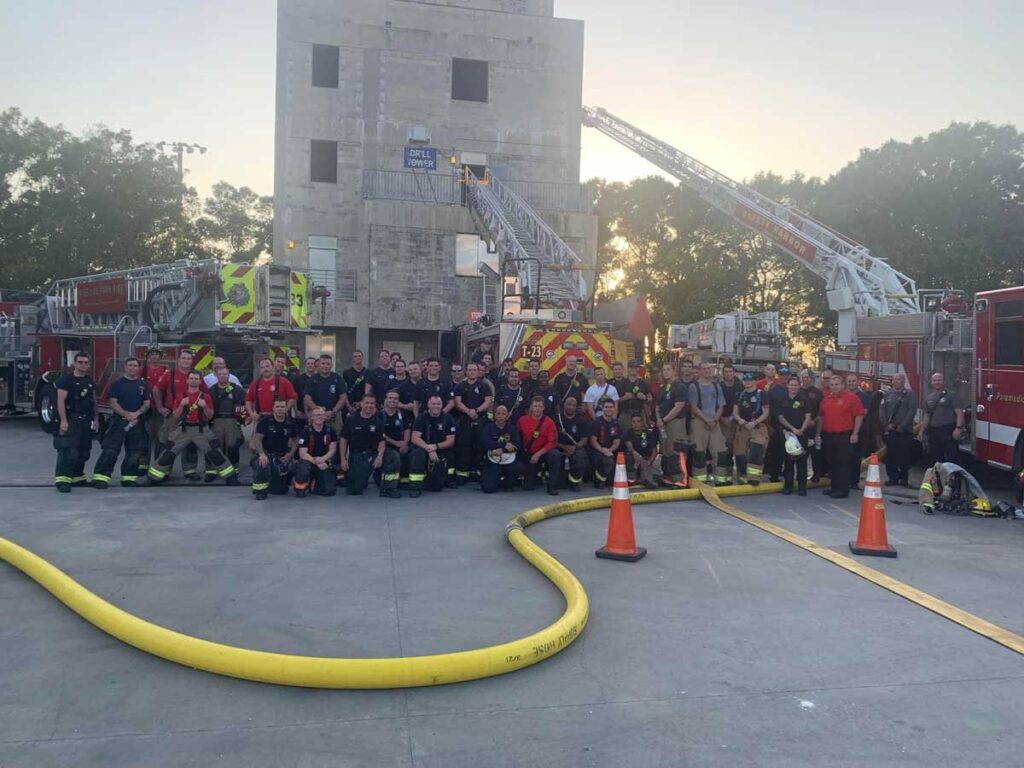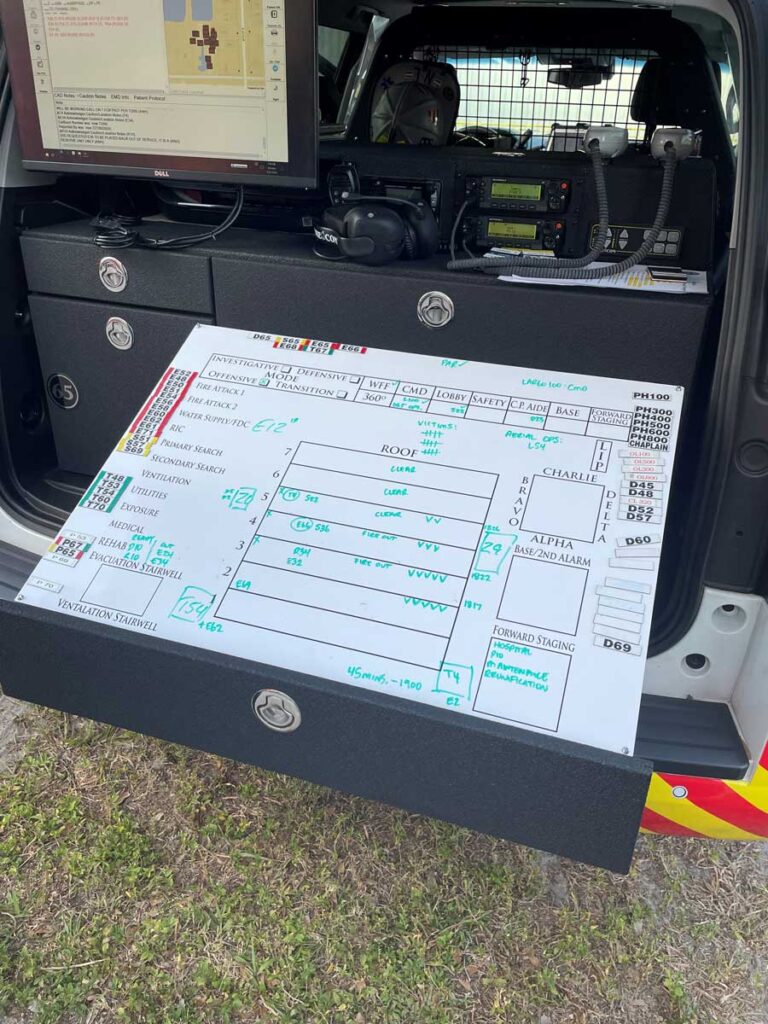
By Lindsay Judah
Time controls so much of our lives and is integral to everything we do. This is especially true in the fire and emergency services industry. Think about it: we document and timestamp nearly every action we take. This article will explore how firefighters and EMS personnel can improve their orientation to time and why it matters.
Joe Pronesti: The Fireground Clock
Time
We anticipate time. If we’re fortunate, the alarm clock will go off, and we will have an opportunity to start our day. Alternatively, some suffer from poor sleep quality and may remain awake, anticipating the next day.
We dread time. If we know we must deliver disappointing news, engage in courageous conversations, or give discipline, we may dread time.
We maximize time. If we’re enjoying ourselves at pass-on in the morning with the crews, completing fun training exercises, having a one-on-one and getting to know a new member, solving the world’s problems at the kitchen table, or playing in the latest pickleball tournament, we maximize our time.
We plan time. If we’re completing an online course, driving to a meeting, preparing for an upcoming presentation, working through the accreditation process, writing performance evaluations for our personnel, or working on the next year’s budget, we may plan our time to ensure the tasks are completed by established due dates.
We value time. If we consider our experiences and reminisce about events that bring back heartwarming memories, celebrate small victories, or are reminded of how short life can be, we may value and appreciate our time.
Thought Exercise
Consider completing this thought exercise. If you have a stopwatch function on your watch or phone nearby, start the stopwatch. Five seconds elapse, 15 seconds elapse, 30 seconds elapse, then close your eyes and think about the best firehouse meal you’ve ever had. Think about the details (consider saying out loud or keying up on the radio on a talk around channel):
- Who made the meal?
- Which fire station were you at?
- What type of plate or tray did you use?
- Who sat at the table with you?
- Did you finish first and jump up to wash dishes, catch a call while eating, or have time to really sit and enjoy the meal and the company?
Then pause and think about the elapsed time. What time do you think the stopwatch reads now? Open your eyes and check. How close was your guess to the actual time on the stopwatch? Consider walking your crew members through the thought exercise individually and see who gets closest to the actual time.
EMS/Fire Practical Approaches
While serving as a district chief as well as a training captain, I continuously monitored time, specifically time lapse. One consideration I continuously strived to remain aware of was time lapse on an incident as well as during training events. This applied to a variety of incidents and scenarios: gas leaks, water rescues, structure fires, medical calls, and vehicle extrications.
Do you ever practice your skill of orienting to time? I have challenged myself to remain cognizant of time-lapse during a variety of non-EMS/fire activities. For example, while on a drive, I’ll look at the clock in the vehicle. After driving ~15 miles, I’ll speculate about how much time has elapsed, then I’ll confirm by checking the time. Another instance that I’ll check the time is while completing cardio. For example, I’ll climb 110 flights on the stair climbing machine. I’ll look at the time, just like when I’m driving, check the time, wait a while, and estimate the time down to the second, and then I’ll confirm.
Another semi-related mental exercise I’ll complete while climbing on the stair climbing machine is run through scene size-ups and incident command for a Mayday scenario. I’ll set the stair climbing machine to level ~6, refrain from touching or leaning on the equipment, and climb for five minutes then test my orientation to time-lapse. Then, I’ll complete a mental checklist of all incident command benchmarks necessary for managing a Mayday, which can be said aloud. The benchmarks I’ve used include a jurisdiction-specific checklist as well as benchmarks and personalization discussed throughout Proactive Rescue Operations, One Bad Day presentation by Lieutenant Bassel Ibrahim.
First, I acknowledge the Mayday and “who, what, where,” confirm dispatch acknowledgement (this can cue dispatch to send predetermined additional resources), and communicate with the firefighters experiencing the Mayday by name (it is helpful to have a roster sheet or real-time digital view for personnel on-duty each day, identifiers by self-contained breathing apparatus tracking; and listening to crews, even in neighboring jurisdictions communicate on the radio, which can help orient the incident commander to who is speaking on the radio during multi-agency response incidents—learn your people). Then I will confirm the “GRAB LIVES” checklist:
- how much air do they have remaining and consider time (gauge);
- whether they have their radio and are in communication;
- whether they’ve activated their pass device;
- remind them to
- control their breathing;stay low as conditions dictate;ensure that their flashlight is on;try to make noise with their tool;search for an exit, if, possible such as doors, windows or location of a hoseline (and to update command if any are located);
- shield their airway.
Depending on incident staffing, there may be an accountability, command aide, or field incident technician already at the command post. If not, assign an additional individual to continue incident command or manage the Mayday.
We want to
- ensure radio discipline;
- contact the crew assigned with the member experiencing the Mayday (as well as crews operating in the same area);
- assign resources such as the rapid intervention team (RIT), backup RIT, and rescue division leader;
- confirm the transport unit is prepared to receive;
- confirm tool and equipment accessibility;
- notify the receiving hospital;
- and ensure orientation to time.
Orientation can be enhanced by requesting dispatch provide a five-minute timer and tracking everything on a command board or tablet.


Similar to the above firefighting and Mayday example, this orientation to time proves essential for EMS incident responses, as well. Numerous agencies have access to EMS protocols online. These can be reviewed or recited to a peer after completing cardio and elevating your heart rate. Many medical director protocols list guidance on time for a variety of considerations, such as the exact time of symptom onset for suspected stroke, frequency and dosage of medications administered while working a cardiac arrest patient, length of time between contractions, or the recent use of erectile dysfunction medication. Additionally, it is essential to maintain situational awareness of time spent on the scene for critical patients. Remaining oriented to time-lapse can positively influence patient care and may lead to improved patient outcomes.
Time Management Tips
As shared by Neha Kirpalani in her HBR article, What’s the #1 Productivity Tool? For Me, It’s Timeboxing: “Timeboxing is a term taken from agile project management and has been recognized as the most useful productivity hack. It involves translating a to-do list into blocks of time on your calendar, scheduling them, and sticking to that schedule. Simply put, it gives you a plan for what to do, and when.” Timeboxing enhances organization and intentionality with how individuals spend their time throughout a given workday.
One approach to productivity and decreasing instances of procrastination is the concept of “Eat That Frog!” Brian Tracy authored a short book titled, Eat That Frog!: 21 Great Ways to Stop Procrastinating and Get More Done in Less Time. He discusses the importance of accomplishing the biggest, hardest, and most important task first. If we can accomplish this, we will have improved bandwidth throughout the day to engage in other important tasks, in part because we are not dreading or distracted by the task, we know needs to be taken care of (the frog).
We can measure unit hour utilization (UHU) for our crews responding to incidents and conducting official business. Have you ever considered your personal hour utilization (PHU)? How can we achieve greater effectiveness with our time and prioritize today’s to-do list?
Lastly, consider reading a book by Michael Hyatt, Free to Focus: A Total Productivity System to Achieve More by Doing Less. This book examines topics such as completing tasks and enjoying them, productivity, as well as ensuring your focus is appropriate for the work you’re assigned. One tip provided by Hyatt related to exercise is that many people will say they do not have time for exercise. However, studies show that those who make time for exercise are generally better at balancing the demands of work and home. Pro tip: Go for a walk.
*
Time can be elusive if we are not dialed in, mindful, or oriented. This can have undesirable results if our EMS or fire incident relies on effective time management and awareness of benchmarks, our colleagues rely on our completion of an assignment to move forward on a collaborative project, or the city/county administrator has a due date that must be met.
Tempus Rerum Imperator (time, commander of all things)

Lindsay Judah, DPA, CFO, CTO currently serves as a consultant and previously served as a district chief in Florida. She’s also an adjunct professor and alumna of Valdosta State University, teaching courses in Organizational Leadership and Public Administration. Her doctoral research focused on implementing innovation in the fire service, specifically UAV programs. She is an Everyone Goes Home® Advocate, serves on the Awards and Scholarship Committee for the Florida City County Management Association, and participated on the IFSTA Validation Committee for Chief Officer 5th ed. https://linktr.ee/chiefjudah
The opinions expressed in this article are those of the author and do not represent any organization.
References
Hyatt, M. (2019). Free to Focus: A Total Productivity System to Achieve More by Doing Less. Baker Books. Retrieved from https://www.amazon.com/Free-Focus-Productivity-System-Achieve/dp/0801075262/
Kirpalani, Neha. (2021). What’s the #1 Productivity Tool? For Me, It’s Timeboxing. Harvard Business Review. Retrieved from https://hbr.org/2021/09/whats-the-1-productivity-tool-for-me-its-timeboxing
Tracy. B. (2017). Eat That Frog!: 21 Great Ways to Stop Procrastinating and Get More Done in Less Time. Berrett-Koehler Publishers. Retrieved from https://bookshop.org/p/books/eat-that-frog-21-great-ways-to-stop-procrastinating-and-get-more-done-in-less-time-brian-tracy/12473374?ean=9781626569416
Truck Company Misfits Podcast. (2021). Episode 19 – RIT with Lt. Bassel Ibrahim. Retrieved from https://podcasts.apple.com/dk/podcast/episode-19-rit-with-bassel-ibrahim/id1509094964i=1000520592219

